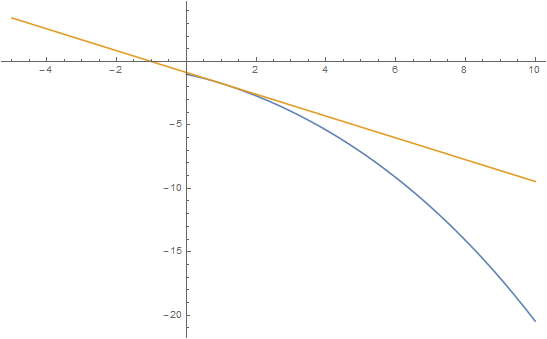We first have to differentiate the function to obtain the gradient of the tangent.
Given #f(x) = sqrt(x) - e^(sqrt(x))#.
Then #f'(x) = 1/(2sqrt(x))-1/(2sqrt(x))e^sqrt(x)#.
Now, setting #x=1# and substituting into #f'(x)# we can obtain the gradient:
#f'(1) = 1/(2sqrt(1))-1/(2sqrt(1))e^(sqrt(1))=1/2(1-e)#
Now we need a #y# value for the line to pass through. We know as it is tangent to #f(x)# at #x=1# then we can substitute #x=1# into #f(x)# giving us:
#f(1) = sqrt(1) - e^sqrt(1) = 1-e#
So we now have an #x# and #y# value, all that remains is to substitute the values into #y= mx+c# to find the y intercept.
#(1-e) = 1/2(1-e)(1) +c#
#-> c = 1/2(1-e)#
Hence our final answer:
#y = 1/2(1-e)x + 1/2(1-e)#
If you wish you factor this to tidy it up a bit:
#y = 1/2(1-e)(x+1)#
Here is a graph showing #f(x)# (blue) and the normal line at #x=1#(orange). (The blue line ends at #x=0# due to the trouble of taking the square root of a negative).



